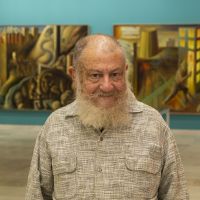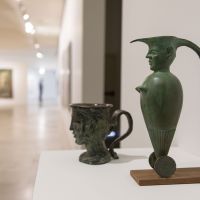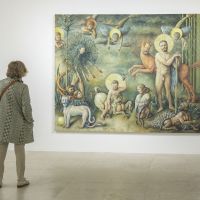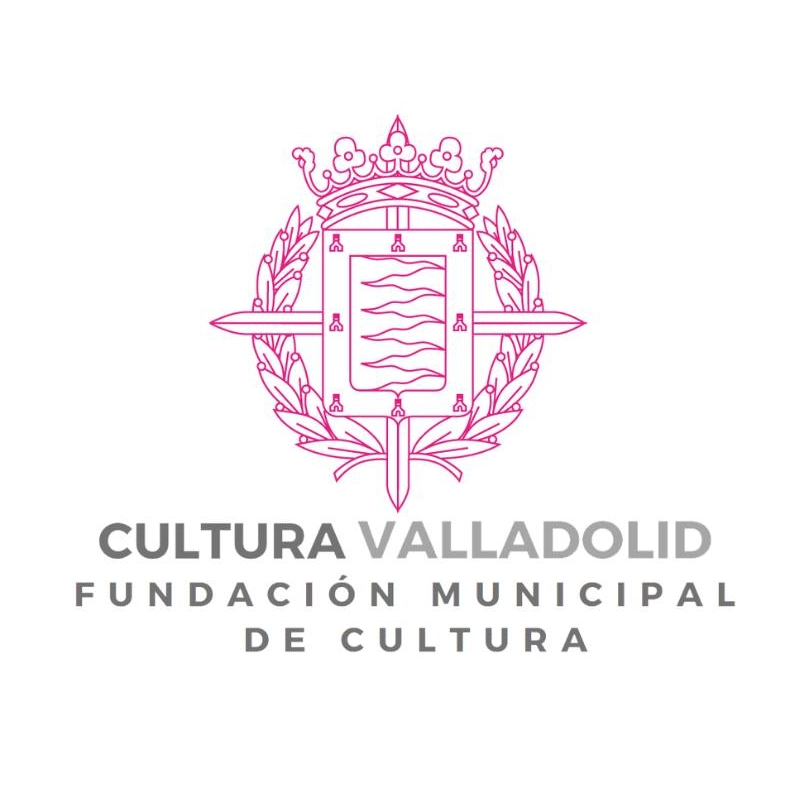GUILLERMO PÉREZ VILLALTA
La tierra habla, el cielo escucha

[English version below]
La figura, la trayectoria y el trabajo de Guillermo PĂ©rez Villalta (Tarifa, CĂ¡diz, 1948) son una referencia nacional en cuanto a autonomĂa e integridad estĂ©tica se refieren. Desde los primeros setenta en que arranca su carrera, el artista ha mantenido gran independencia con respecto a los cĂ¡nones y las modas imperantes en el mundo del arte. Prueba de ello es su heterodoxa lectura de la vanguardia -y de la modernidad en conjunto-, asĂ como su beligerante defensa de una belleza antiacadĂ©mica y de un arte eclĂ©ctico, en el cual los aspectos conceptuales, simbĂ³licos y alegĂ³ricos -un tanto hermĂ©ticos- se mezclan sin soluciĂ³n de continuidad con el juego, las paradojas, el kitsch y la disoluciĂ³n de lĂmites entre alta y baja cultura.
Abundantemente referenciado en nuestros manuales de Historia del Arte, presente en todos los listados de nombres imprescindibles y premiado con los mĂ¡s importantes galardones de nuestro contexto (Premio Nacional de Artes PlĂ¡sticas en 1985; Medalla de Oro al MĂ©rito de las Bellas Artes en 2006; Premio de Cultura de la Comunidad de Madrid en 2007; Premio Nacional de Arte GrĂ¡fico en 2021), PĂ©rez Villalta vive, a sus 73 años, y tras mĂ¡s de cinco dĂ©cadas de absoluta dedicaciĂ³n al arte, un momento feliz en el que su obra estĂ¡ siendo revisada por nuevas generaciones de artistas y crĂticos españoles que han encontrado en Ă©l a un pionero de la pintura figurativa, narrativa, biogrĂ¡fica y desdramatizada; de las cuestiones de gĂ©nero y las subculturas asociadas (bear, leather, bondage, sadomaso); del ideario posmoderm; de las poĂ©ticas del archivo, etcĂ©tera.
La AsociaciĂ³n ColecciĂ³n Arte ContemporĂ¡neo alberga en su colecciĂ³n, depositada en el Museo Patio Herreriano, dos importantes pinturas de PĂ©rez Villalta muy representativas de sus intereses y manera de hacer en el momento de su realizaciĂ³n: Personaje matando un dragĂ³n (1977) y La Senectud de los gigantes (1986). A partir de ellas, el comisario de la muestra, Ă“scar Alonso Molina, ha ideado una exposiciĂ³n dividida en dos Ă¡mbitos bien diferenciados, las Salas 6 y 7 de la tercera planta, presididos cada uno de ellos por sendas obras.
El recorrido de la exposiciĂ³n se articula pues en dos grandes bloques que permitirĂ¡n al espectador acercarse de manera organizada al complejo y sugerente universo de PĂ©rez Villalta, al tiempo que se le ofrece la oportunidad de profundizar en el significado de estas dos obras señeras a travĂ©s del cuantioso conjunto de trabajos reunidos en torno a ellas. Las obras invitadas provienen fundamentalmente del conjunto depositado por el artista en el Centro Andaluz de Arte ContemporĂ¡neo de Sevilla. Del estudio del propio PĂ©rez Villalta, asĂ como del Museo Nacional Centro de Arte Reina SofĂa de Madrid, han llegado el resto de obras expuestas, hasta alcanzar casi la centena, entre las que contamos con un buen nĂºmero de ejemplos de absoluta referencia en la producciĂ³n del artista.
Guillermo PĂ©rez Villalta:
The earth speaks, heaven listens
The person, career and work of Guillermo PĂ©rez Villalta (Tarifa, CĂ¡diz, 1948) are a national referent in terms of autonomy and aesthetic integrity. Since the early 1970s, when he set out on his career, he has maintained great independence with respect to the prevailing canons and fashions of the art world. Proof of this is his heterodox reading of the avant-garde – and of modernity as a whole – as well as his belligerent defence of an anti-academic beauty and eclectic art, in which conceptual, symbolic and allegorical aspects – somewhat hermetic – blend seamlessly with play, paradoxes, kitsch and the dissolution of the boundaries between high and low culture.
Abundantly referenced in our Art History manuals, present in all the lists of essential names and awarded with the most relevant prizes in our context (the National Prize for Plastic Arts in 1985; the Gold Medal for Merit in Fine Arts in 2006; the Culture Prize of the Region of Madrid in 2007; the National Graphic Art Prize in 2021), PĂ©rez Villalta lives, at 73 years of age and after more than five decades of absolute devotion to art, in a happy moment in which his work is being reviewed by new generations of Spanish artists and critics who have found in him a pioneer of figurative, narrative, biographical and undramatised painting; of gender issues and associated subcultures (bear, leather, bondage, sadomasochism); of post-modern ideology and the poetics of the archive, etc.
The Contemporary Art Collection Association houses, at the Museo Patio Herreriano, two significant paintings by PĂ©rez Villalta that are highly representative of his interests and manner of working at the time of their creation: Character slaying a dragon (1977) and The Old Age of Giants (1986). Based on these two paintings, the curator of the exhibition, Ă“scar Alonso Molina, has devised an exhibition divided into two distinct areas, Rooms 6 and 7 on the third floor, each of them presided over by two different pieces.
The exhibition route is therefore divided into two large blocks which allow the viewer to approach PĂ©rez Villalta’s complex and evocative universe in an organised manner, while at the same time providing the opportunity to delve deeper into the meaning of these two outstanding pieces through the large body of work gathered around them. The guest pieces come mainly from the collection deposited by the artist at the Contemporary Art Centre of Andalusia in Seville. The rest of the pieces on display come from PĂ©rez Villalta’s own studio, as well as from the Reina SofĂa National Art Centre in Madrid, bringing the total number of pieces on display to almost a hundred, including a good number of absolute benchmarks in the artist’s production.









